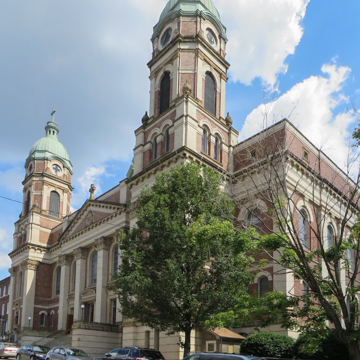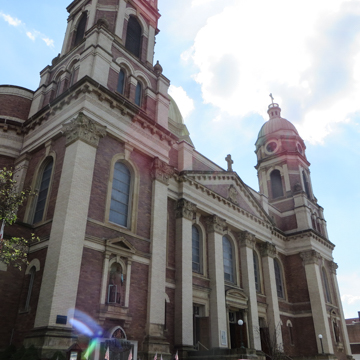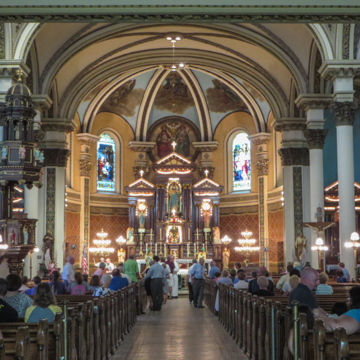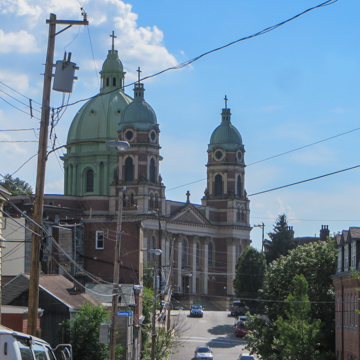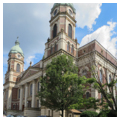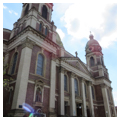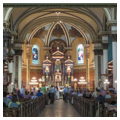This church enjoys the best scenographic placement of any in the city, but not without cost. Its location high on Polish Hill affords it prominence both from Bigelow Boulevard above and from a wide sweep of the Allegheny below; but had the church burrowed headlong into the hillside, as it appears to, its apse would have been shrouded in darkness. Instead, William P. Ginther (1858–1933), of Akron, Ohio, set the church parallel to the hillside and designed a fake facade for one of
The original church was a small, wooden frame structure at the base of Polish Hill near the railroad tracks. In 1899, Polish immigrant millworkers gathered $10,300 to purchase property at the crest of Brereton and Dobson streets, just below the newly announced site of Bigelow Boulevard. Having resolved the problem of straddling the church across the brow of Polish Hill, Ginther appropriated various European precedents for his design. Francesco Borromini's S. Agnese on Piazza Navona in Rome appears to have contributed the high domed towers and the central dome (reaching almost one hundred feet in height on the interior), while the high attic with its prominent square windows and their flared moldings—so important for the dramatic effect on motorists on Bigelow Boulevard—is closely patterned after Michelangelo's St. Peter's in Rome.






